How to Practice Golf: Developing an Annual Training and Tournament Plan for Golf (Part 2)27/10/2012
 Last week I discussed periodization and its importance in developing an annual training and tournament plan so you can guide the development of your golf skills and confidence towards playing your best golf at the most important times in the year. You may recall that in one of my examples I used a 3 month stretch from October to December on the Australasian Tour when the prize money for a number of events was significant. The key to remember is that you determine the reasons why you want to play your best at certain times in the year. It is naive to think that you will have your 'A' game throughout the year. No golfer can maintain a low score average every week of the year. The idea is to develop the ability to reduce your high score average and this is easier to do with a well constructed training and tournament plan. Take a look at the image (above) of Rory McIlroy's score variation leading up to the last event in the Fex Ex Cup play offs. His highest score in the 50 rounds he played on the PGA Tour was 79 and his lowest was 64 a difference of 15 strokes!  Golf Performance Prediction Whether you’re a professional tour golfer or elite amateur golfer the idea behind periodization of your season is to effectively manage your skill development (mental and physical) within a defined time frame by predicting performance outcomes in key events. Tiger Woods has on more than one occasion stated that he builds his year around golf’s Major Championships: Tiger plays golf tournaments around these important events in the calendar only to gauge his playing skills leading into the event so that he can make the necessary adjustments to his game to be primed and ready for each major event. In the image below I've constructed a calendar of the tournaments he played including the major championships. I've placed a peaking guide to help you to understand the macro view of your tournament schedule. The Macro Cycle A macro cycle refers to your annual golf training and tournament plan (Like the one above) and helps you to prepare for the important tournaments in your golf season. Now in Tiger Woods’s case he wants to peak at least four times within the year (possibly 5 with Fed Ex Cup Playoffs) which is described in advanced training theory as a multi-cycle (more than one peak in the year). PGA and LPGA tour golfers carefully choose the events they want to play in a season as their experience tells them that the course style and overall environment is extremely important to them. These positive environments give them confidence to feel like they can play their best. The Preparation Phase To drive your performances towards peak performance you need to plan your training stages carefully and the way we teach our students at Pro Tour Golf College to do this is by introducing the following three management phases into their golf planning process.
These phases help to take the big picture look at your golf season and break it down into more manageable periods and they will help you to form the groundwork of effort you will apply to raise your golfing ability so you can perform optimally when it matters most to you. The preparation phase is normally 2/3 to 3/4 of the macro cycle and in this phase you spend a large amount of your time improving and refining your technical skills so you can take them confidently into your important golf tournaments. The preparation phase is additionally split into general and specific preparation of which the general preparation segment takes over half (see below). An example of general preparation for an elite golfer could be a specific change to your golf swing technique to improve your start line capability. An example of specific preparation (what we call the targeting mode) would be working on improving the consistency of your ball flight and spin control in short and long game, by measuring the quality of 3 factors;
 The general preparation phase in Tiger's case would more than likely be from October through to January where he would shift into specific preparation phase through January leading into his first event on the PGA Tour - The AT & T Pebble Beach Pro Am. This tournament will help Tiger and his swing coach Sean Foley to determine what adjustments to his game he needs to make to boost his performances through February and March leading into April and the first major; The US Masters golf tournament. The Competition Phase The competition phase of your annual training and tournament plan is a difficult and challenging period depending on the amount of tournaments you're playing in. Managing your performances during this period really is a result of how well you trained in your general and specific preparation phases. (We'll discuss how you manage it my next article) The competition phase is further broken into pre-tournament and tournament phases because in the case of golf there are groups of tournament periods throughout the year that require rest periods and pre-tournament preparation periods in between. This is a careful juggling act that requires a lot of thought and careful planning to maximize the timing to fully prepare yourself for the main tournaments in your tournament calendar.  The Transition Phase The transition phases are the recovery and restoration phases where you take a break from the physical and psychological effort over the previous weeks and months. Because of the intensity of training and tournament golf you need to rest to give your mind and body a chance to recover completely. Without adequate rest you leave yourself susceptible to injury. The periodization model below has been constructed to help you to understand how a world class golfer like Tiger Woods could use a periodization model to help him to prepare more effectively for major tournaments. Interestingly, Tiger didn't win the US Masters in 2012 he won the Arnold Palmer Invitational two weeks before! So peaking is not an exact science however in our opinion elite amateur and professional golfers could do worse than having an annual plan that is periodized to manage the work that will take place throughout the year. The fact that you plan for success puts you way ahead of the other golfers who just play from tournament to tournament.
In the third part of my series next week I will show you how to plan and build your weekly training programs so they fit neatly into your training phases which is a very important step in the process. Again, thanks for taking the time to read our blog, David and I appreciate your support and hope you'll share our blog with your friends on Facebook and elsewhere. Lawrie Montague and David Milne - Pro Tour Golf College Your Success On Tour is Our Business 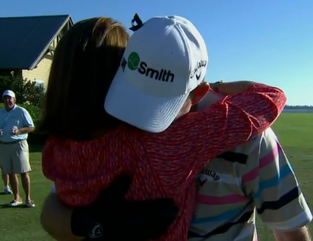 Who is this Tommy “Two Gloves” Gainey and where did he come from? How did he shoot 60 and win on the PGA Tour at the McGladrey Classic at Sea Island Georgia last week? Born in Darlington South Carolina in 1975 he turned pro in 1997. He was the number one player for his high school team but no college drafted him as they didn't believe his swing was good enough to compete successfully. So Tommy went to work on the assembly line with A.O. Smith the worlds leading producer of hot water tanks. His job there was to wrap insulation around the hot water tanks, and on the weekends he played golf at his local golf club. Unfortunately he lost his job when there was a downturn in the economy, so Tommy “Two Gloves” (from his baseball days) hit the mini tours and played them from 2004 to 2007. He played them all and some don’t even exist anymore. The Tarheel, Hooters, Grey Goose, US Pro, and Gateway Tours and anywhere else he could tee it up and play for cash. He won four times on the Tarheel and once on the Hooters. 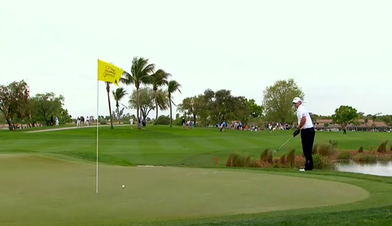 He proved to be one of the most consistent players during the 2006/07 season with thirteen top five finishes and earnings over US $100,000.00. With a little cash under his belt and confidence in his game Tommy entered to play at the 2007 Tour School to gain a card to play on the PGA Tour. This he did negotiating all three stages and was only one of nine to accomplish this feat. Unfortunately like most 1st time graduates of PGA Tour School he played in 24 events but only made 6 cuts to lose his playing privileges. He came to prominence on the Golf Channel’s “Big Break V”and then winning “Big Break Vll” and the only golf instruction he has taken has been from his brother Allen.  Back on the Web.Com Tour he persevered and in 2010 had his best year winning twice and finishing 4th on the money list earning just over US $400,000.00 and earned the right to play on the PGA Tour once again. This time he was ready to compete on the PGA Tour and encouragement from his friend Jim Furyk who told him; “Don’t change your game as you were kicking the butts of the players on the mini tours, so just keep going at it.” Furyk added “Keep your head up and keep trying and sooner or later the win will come.” “Keep your head up and keep trying and sooner or later the win will come.” Ironically when Tommy shot 60 in the last round at the McGladrey Classic the player he beat was Jim Furyk! Back on the “Big Show” in 2011 Tommy had a breakout season. With one 3rd finish, seven top ten’s and ten top 25’s he earned a massive US$2,174,191.00 and a 30th position on the money list. None of his statistics stand out and point to his improved status on the PGA Tour but one thing he does well is what the commentators describe as "he knows how to golf his ball around the golf course." In fact Golf Channel's Brandle Chamblee a former tour player said that "Tommy's swing was like someone trying to kill a snake with a garden hose!"  Tommy Gainey's swing might not look like a thing of beauty but his impact alignments are second to none as the picture on the left demonstrates. And never forget the only position the golf ball listens to is impact and the point it separates from the club-face. His unorthodox action delivers the club in a very consistent and efficient way. When he has hit shots with the Trackman Launch Monitor, in his own words, "it does not like me, and gets confused and spews out unusual data!" Listed in the table below is some of more recent data from the Trackman Radar on Tommy's game. 'Smash Factor' is an area he stands out in, ranked 21st on tour and that statistic show's how solid his impact is, so he is right up there in this category. Also 'Total Driving' and 'Carry Efficiency' where he ranks 4th and 5th is why you should never judge a golfers game on how his swing looks but more on how we evaluate our Pro Tour Golf College students ball flight on three factors. 1. Solid contact. 2. Club-face pointing at target when the ball separates from club-face. 3. Minimal curvature of the ball in flight.  Now remember the company A.O. Smith that Tommy worked for between 1996 and 2000 before they had to make him redundant due to the downturn in the economy? Well if you look on his cap in the photo above they are his major sponsor now and have a great relationship with Tommy describing the people he worked with as family at the press conference after winning. Tommy "Two Gloves" Gainey is testament to the fact that if you work hard on the right things, believe in yourself and have loads of perseverance, and also most importantly dream "Big" you can live the dream. David Milne and Lawrie Montague - Pro Tour Golf College Your Success On Tour is Our Business How to Practice Golf: How to Build Your Annual Golf Training and Tournament Plan (Part 1)20/10/2012
If you’re serious about your golf (and I know that you are) then you are serious about performing to the best of your ability as often as you can. This will be easier to do with an annual golf training and tournament plan that takes into account development of what at Pro Tour Golf College we call your “critical to performance skills.” These are the golf skills that when developed fully will give you your best chance of lowering your competitive score average in tournament competition. The key to developing elite golf performance is preparation, and to prepare properly for tournament golf you need to look at a full year of golf and identify the important tournaments that you want to perform your best in (see below) and then develop a training plan that carefully manages your effort throughout the year to peak for these events. An annual golf training plan is called a periodized plan and it is essential for developing and maximizing your physical and mental skills so you can prepare appropriately for your important tournaments throughout the year. A periodized golf plan breaks your year down into smaller and more manageable phases of training. Surprisingly most elite golfers in our experience don’t have or use an annual golf training plan which makes no sense if you’re a serious competitive golfer who wants to continue to get better. Sounds easy? It’s not. But it is definitely worth learning how to do as it will give you a decided edge over your fellow competitors who don’t know how to periodize their year. Over the next few weeks I'm going to show you how to build your very own training plan from the ground up. Traditionally the development of elite golfers has been an approach of “a little bit of this and a little bit of that.” In other words “an adjustment here and an adjustment there” with no real thought about longer term development. Part of the reason for this is that most of the golf experts focus their energy on developing and improving golf swing mechanics and as such don’t often see a long term development plan as being important compared to fixing a nagging swing issue. This is not to say that fixing nagging swing issues isn't important, however in this article the focus is on what a elite golfer would need to do over a year to develop the critical to performance skills that would influence better performances when the major golf tournaments come around. You will more than likely play a lot of golf events in a calendar year and the idea behind periodization is to break your year down into days, weeks and months. Then you look at the year and decide when the best time to peak for the important events is and build your training approach around these key tournaments. In Australia the major professional golf events on the PGA Tour of Australasia start in October and go through to December. For many Australian professional golfers who have been playing on the pro-am circuits around Australia, these bigger money tournaments are the events they want to peak for. The table below forms a part of the first stage of an annual golf training and tournament plan. It shows the key big money tournaments (Highlighted Yellow) that Australasian tour players will want to peak for. This approach allows you to see the 'bigger picture' which makes it easier to decide on when to start working on your golf improvement strategies. Ideally as an elite golfer you will work closely with your golf coach/instructor to develop, adjust and review your annual plan to get it just right at the appropriate time. It isn't a perfect science - there isn't one, however it is a lot better approach to golf improvement than the more common approach of a short-term ‘fix’ mentality that still pervades golf instruction culture.  Click on the image to make it larger Click on the image to make it larger If you were going to improve an aspect of your golf swing performance when would you begin the work? As we've discussed in previous articles changing golf swing techniques requires a planned approach. Elite golfers are always working on improving their golf swing techniques and with a planned approach you have a much better chance that your preparation will lead to better and more consistent performances on the golf course. This is the key to periodizing your golf training. Plan the development phases very carefully so that you can train your golf skills to a very high trust level when you compete in important tournaments. At Pro Tour Golf College we begin to build an annual plan by dividing the golf skills development into three discrete categories. 1. Technical skill development 2. Targeting skill development 3. Tournament skill development Technical Skills (Drills, video analysis, training aids and lots of repetition) Technical skill development work in long game and short game is done early in the year well before the main tournaments begin on the calendar so our golfers can improve their weaker techniques and get them to the autonomous level. In golf this rarely happens for the majority of elite golfers we've observed who are still working too much on their techniques by the time the 'majors' come around. Targeting Skills (Targets, ball flight control, skill testing, rhythm and tempo) High level golf performance requires the ability to achieve a certain standard of excellence in tournaments which in this case is to hit a certain percentage of golf shots into fairways and greens. The targeting performance threshold for golf tournament professionals is a 60 percent standard. What this means is that your golf scores get lower and more competitive in tournaments when you reach this important level. Sixty percent of fairways hit is around 8 fairways out of 14 and 60 percent of greens hit in regulation is around 11 greens out of 18. A 60 percent standard or better in your green-side short-game skills means that 60 percent of your green-side golf shots are converted into pars or better which will guarantee a lower competitive score average. At Pro Tour Golf College students understand that they need to learn to hit more than 60 percent of their green-side shots into a target zone that is only 1.5 metres or approximately 5 feet. In this way they are facing putts with a probability of success of greater than 50 percent.  Tournament Skills (Game plans, course charting, rhythm and tempo and mental skills) You might be completely happy with your golf swing and you’re hitting your golf shots into the target zones 60 percent of the time or better, but this is only a part of the puzzle. You need to be able to competently prepare to play in golf tournaments which requires course plans and charting of holes. You also need a very high level of trust in your skills and capability to perform and this phase is all about competing as often as possible to develop your confidence to perform to the best of your ability. The tournament skills part of your development is mostly your mental skills development. This is an extremely important part of your over-all approach to peaking at the right time for golf tournaments. By the time you have arrived at the tournament skills part of your development process you will be spending a lot more time on mental skills strategies than you will on technical skill work. The image below shows a model of the way we plan golfer development at Pro Tour Golf College. Our aim is to get the technical work completed within a 5 month window so we can concentrate on developing targeting skills and mental skills. You will see in the model overlapping from one phase to the next and in this example we're aiming be in the mental and scoring zone by September. Notice also how the technical training load starts high in January and tapers by May and then targeting loads peak in August before tapering again into the key tournament dates? This is really the art and science of how training and tournament planning works. With practice you get better and managing your skill development so you can sharpen your skills to perform at the right time. Now you might be thinking that there are tournaments throughout the year so how does this affect performance in them?
The way to look at it is that when you're in the technique development phase you use the minor golf tournaments to test your playing skills for feedback on how your different golf skills are holding up under tournament pressure. Next week we'll continue building your annual golf training and tournament plan with the goal of showing you how you can put together your own plan for next year and in the next article we'll be covering the training phases, and the different training cycles that fit into the training phases that help to break your annual plan into smaller more manageable segments. So keep an eye out for part 2 next week and thanks for taking the time to read our articles. We really appreciate the support. Lawrie Montague and David Milne - Pro Tour Golf College Your Success On Tour is Our Business  In four months time Vijay Singh will turn fifty years old and will be eligible to compete on the Champions Tour. The former World No.1 (a position he held for 32 weeks consecutively in 2004 and 2005) has won a total of US $67,255,195.00 playing on the USPGA Tour. Next year will be his twentieth season on the USPGA Tour after a successful stint playing on the European Tour in the late 1980’s and early 1990’s. The “Big Fijian” turned professional in 1982 and played the Asian Tour winning his 1st tournament the Malaysian PGA Championship in 1984 and has five victories on the Asian Tour. Unfortunately his career struck problems there when he was suspended from the Asian Tour in 1985 over allegations that he had doctored his scorecard at the Indonesian Open. This claim has been vehemently denied by Singh, saying in any case, it should have resulted in disqualification from the event and not suspension from the tour. Two years of hardship followed where he had to take up club positions at the Keningau Club in Sabah, and later at the Miri Golf Club in Sarawak. A lot of free time gave Vijay the opportunity to develop his trade mark hard working reputation that he has become renown for over the years on driving ranges at tournament sites all over the world.  He saved enough money to go and play on the Sunshine Tour in Africa in 1988 and won the Nigerien Open. This win allowed him to enter the European Tour School the same year where he was successful in earning a tour card for the following season and launching a career on that tour where he won thirteen times. Vijay gained his playing rights on the USPGA Tour in 1993 and there are not too many active professionals presently who can match the record that Vijay has compiled. He won the money title on three occasions 2003, 2004 and 2008 and the FedEx Cup in 2008. But it’s his three Major wins (US Masters 2000, USPGA 1998 and 2004) which sets him apart and got him elected to the World Golf of Fame in 2004 and inducted in 2006. His thirty four USPGA Tour wins is 14th in the all time ranking. In 2004 he had an outstanding year winning nine times and a winnings of US $10,905,166 and it’s still the record for the most money won on tour (Tiger also has won nine times in 2000) in a single season.  So where does he go from here? Vijay’s putting woes which have been well documented recently where every length of putter combined with every type of grip being called upon to allow him to stay competitive in the twilight of his career. He is presently using a belly putter with a left hand low reverse “Paw” grip. The only thing he has not used in competition is putting left handed! I have his statistics from his current 2012 season and compare them to his record breaking 2004 season where he gained the World No. 1 crown to see which area of his game is not allowing him to win on tour in recent times. 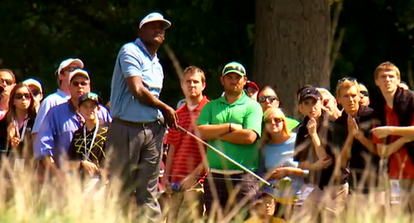 There's no doubt Vijay is physically in great shape as he looks after himself with a full time trainer on the road with him. And if he can keep himself injury free he will keep playing on the main tour. At last week’s Fry’s.Com Open he stated that he found something that gave him good feels with his putting and is confident that his next win is around the corner. So don’t expect him when he turns fifty next February to play full time on the Champion's Tour as he believes he has unfinished business at the “Big Show” which is the PGA Tour. David Milne and Lawrie Montague - Pro Tour Golf College You Success On Tour is Our Business  There seems to be three parts to golf improvement. The first part is the decision you make to get better. The second is to decide on the best strategy you will use for getting there; and the third part is the execution of your strategy. Simple enough right? Well, yes it’s simple in theory and simple enough if you know how to go about it, but for many golfers who want to improve their game it’s not that simple because they really don’t know how to go about it. The first part of game improvement is the assessment of your current position and golfers from novice to expert are notorious for guesstimating the current position of their game which makes it almost impossible to work out an effective strategy for improvement. For instance when asked for their current competitive score average or greens hit regulation statistic etc, the most common response of many elite golfers we have worked with is “it’s about...” Why do they guess where they’re at? If you want to become a top level amateur or professional golfer you have to move well beyond guessing where your game is at to have any chance of improvement.  If you want to lower your competitive score average you need to develop the habit of measuring your skills accurately to manage and improve your performances. Many motivated golfers will measure their performances on the golf course using very basic statistics such as green’s hit in regulation and fairways hit in regulation but this isn't good enough for developing really low golf scores. This is a good start but you have to move well beyond these basic statistics to continue to find useful strategies to lower your lowest golf scores. “Performance attribution analysis is difficult using the current standard golf statistics, many of which involve relatively crude counting measures.” – Mark Brodie What’s interesting is that this is not that difficult to do! If you really want to improve your skills and performances on the golf course then you really need to start tracking your effort more specifically. For example when you hit tee-shots on a golf course you can measure how many tee shots went into the fairway and how many didn't, and you can also measure how far off-line your tee shots went when they missed the fairway because it won’t help you to know that you hit 7 fairways out of 14, if 4 of the 7 tee-shots that missed the fairway missed it by more than 20 yards! This is a weakness of basic statistics that they don’t reveal this, and what this means for you is that this statistical approach is not as helpful to you if you want to lower your lowest golf score. You can see that using a simple assessment tool like the one above that you can more accurately measure your long game success on the golf course. Using a simple code like the one in the illustration you can accurately track the direction of your golf shots on the golf course so you can analyse your strengths and weaknesses and develop a strategy for improvement. In the 10 round analysis above you can clearly see that Bobby hit 112 tee shots over 8 rounds of golf and that he hit the fairway 63.4 percent of the time and 31.7 percent of his tee shots missed to the left of the fairway and 68.2 percent missed to the right. Not only that, we can measure how far the bad tee shots missed the fairway by which can help us to determine whether the problem is golf swing, mental or equipment.
This is extremely important information for the golfer and the golf instructor as it forms the foundation for developing an effective improvement strategy. Standard statistics don't reveal this type of information and you need it to make smart decisions about the direction of your golf development. By developing simple and accurate assessment tools like the ones we use at Pro Tour Golf College that dig deeper into the statistics of our students we can get to the root cause of problems in their game more effectively without the guess work. This means that we can help them to improve their lowest golf score and move them ever closer to living their dream of becoming a low score super competitive professional golfer. Lawrie Montague and David Milne - Pro Tour Golf College Your Success On Tour is Our Business  Not too many people associate with Australian professional golfer Gavin Coles when they think of the PGA Tour. But he has over the past eleven years played on the PGA Tour four times (2003, 05, 07, 12) and the Web.Com seven times (2002, 04, 06, 08 - 2011). As his record shows he alternates between the tours practically every other year from 2002 and has never held his USPGA Tour card for more than year at a stretch. So why is this so? Gavin was born in Bathurst New South Wales in 1992 and turned pro in 1992. Not known for his athletic build being 5’ 5” tall and 160lbs and one of the shortest hitters on tour (ranked 185th) with an average driving distance of 272.7 yards. Now this statistic is what most people point to as why Gavin finds it difficult to compete on the PGA Tour. It is definitely a contributing factor but when you look at former World No 1 Luke Donald’s average driving distance this year of 280.1yards (ranked 168th) it is not that much different. In fact when you compare their vital statistics it all looks similar apart from scoring average and money won. Rather important those two stats you might say! I have put their 2012 numbers and ranking side by side below to compare and assess where the critical factors are that make the difference. As you can see the scoring average difference between the two is 1.767 strokes per round and that translates to US$3,297,611.00 in money won! 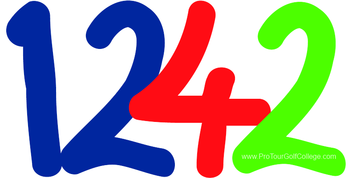 Every student at Pro Tour Golf College understands the scoring code (12-4-2) that all training is designed to guide them to achieve that code and a scoring average of 70. An average of 70 will allow them to play on any tour they choose and be successful. Four areas stand out in the above comparison table between Gavin and Luke. They are, strokes gained-putting in particular distance 10’-15’ and 15’-20’, sand saves, scrambling and bounce back (making a birdie or better after the player has made a bogey). Check out the distance Gavin hits his approaches from 50 yards-100 yards (15’ to 20’) which is his worst putting distance where he ranks a lowly 187th. It really does show that at this very high level finding the slightest edge makes a huge difference on whether you are successful like Luke Donald or as Gavin Coles has experienced, spending more time playing the Web.Com Tour where money on offer is on average 90% less than the PGA Tour and the competition is just as tough. The Aussie battler with three tournaments left in the schedule needs to earn another US$500,000.00 to retain his card for 2013 otherwise its back to tour school, and if not successful another year on the Web.Com waits for him. We wish him the very best of luck and great golf. David Milne and Lawrie Montague - Pro Tour Golf College Your Success On Tour is Our Business... How to Practice Golf: Forget Talent and Learn the 5 Simple Steps to Owning Pro Tour Golf Confidence6/10/2012
 Some people believe that PGA tour golfers are born with a special golf talent and as such become great golfers. I do not. When you watch golf telecasts you will often hear the commentators mention that such and such a player is a "talented player" or that they possess "raw talent" and so on. I have always been interested in why it is so easy for people to describe anyone who is exceptional at something to describe them as 'talented,' so I went on a quick search on the web for a simple definition using the keywords of 'what is talent?' and here's what I found.
It appears then that 'talented golfers' possess natural, innate or unusual abilities. I guess this means that if you can't explain why or how someone can do something at an exceptional level then they must be talented? It's the old 'nature/nurture' debate I suppose? Is someone born with the ability to play golf at an exceptional level or do they learn and develop it?...My business partner David Milne and I are firm believers in the 'nurture' model. Our experience working with thousands of golfers from beginners to winners at our golf schools and more recently at our high performance college has taught us that developing your key mental skills will make a much better golfer out of you than developing your technical skills. Boy does this go against the grain! Yes you need a set of well developed techniques to perform at golf; but you also need a lot more than that if you want to continually get better at this game.  I don't care how good you swing your golf club; if you don't believe you can play a golf shot at a crucial time in a round then this weakness alone will shine through and make your golf swing fail time and time again. When you watch a PGA or LPGA tournament the first thing you should realize is that every golfer competing in that tournament swings the golf club differently. From their golf grip to their back-swing position to their finish they all do it a different way. Talent therefore must have a lot less to do with how someone actually swings the golf club and a lot more to do with how they perform their golf swing when it really matters. Innate ability might actually mean your ability to communicate to yourself in such a way that you can confidently perform with the same level of commitment and confidence anytime you want to. I don't believe this is natural, I believe you learn how to do this.  Jack Nicklaus is considered to be one of the absolute greats of the game and so you would imagine that he would pass his 'golf genes' on to his children and they too would become great at golf. It didn't happen, he passed on his genes and some of them played golf and even played on a tour for a while, however they never got close to playing as good as their father. The same can be said for many other children of great golfers and in fact children of exceptional performers from many other different domains. The bottom line is that there is no substitute for hard work. You have to put in hours and hours of deliberate effort to extract the performances out of it you desire. You develop your innate or natural skills by applying yourself to your craft as often as you can. Now you might be thinking to yourself that you know of golfers who have put countless hours into their game and still they fail to achieve the results they desire, so what gives? There's no doubt that there are many golfers who desperately want to improve their golf and when they fail to achieve someone might be inclined to say to them that they simply lack the talent they need to be successful. Baloney! Here's what you do to change your situation and get on track to acquiring success at golf no matter what your current level. I call this the 5 Step Pro Tour Golf Confidence Routine  Step 1. Decide exactly what you want from the game of golf. If you want to become a better golfer then define exactly what that means to you. What would it look like? What would it feel like? Use your amazing natural and innate imagination and dream a bigger and better dream. Not the one that has you where you are, but the dream that takes you to the place you want to be. A place you've never been before perhaps.  Step 2. Do something about it today. Once you have decided what you want from the game of golf go to work on getting it. Every ounce of effort you apply must directly relate to what you want. No wasted mental or physical effort, just well thought out daily and weekly action plans that move you slowly but surely towards your big exciting goal.  Step 3. Notice what happens The big thing is to develop your awareness of the two critical mental skills that make all the difference. The first is pointing your intention at your bigger goal. That is; the longer term goal that inspires and motivates you to work at your game to get better. This could be a lower golf handicap or winning the club championships or even winning on the golf tour. The key is to never take your eye off this big, important goal. This mental skill is about keep your attention on the smaller intermediate goals that lead to it. Focus on the small daily goals that drive you towards the bigger ones. Every golf shot you hit requires that your attention be as sharp as possible. The better the job you do at this the better the results you will get. Make a personal commitment to hit every golf shot with your full attention on the process and let the outcome take care of itself.  Step 4. Change your approach As you work at your game some of the things you do won't work the way you want them to, so simply change them. I mean it, don't make a big deal out of it and waste your valuable time on techniques that don't work. Change them and get on with the job achieving your big goal. No one gets it right all the time; you have to continually change your approach to find the techniques that work the best. Look for proven models that do work, whether it's a special putting technique, or a specific short-game system or full-swing technique. Apply them continually until they work for you.  Step 5. Never give up on your dream Believe me when I tell you that you will get distracted. Some people you know will never understand your goal and because they don't have something as exciting as you to strive for they might try to talk you out of yours. Don't let them! Stick to your goal like glue and build efficient processes that move you towards it every day. Find the teachers or mentors that will help you to stay focused on your goal and believe in your ability to achieve it. If you don't have a teacher now, you will. You will attract the help you need to achieve your goal by sticking to achieving it at all cost. If talent is about people who possess natural or innate qualities then realize right now that you already possess these natural qualities. Every golfer has the ability to dream bigger dreams and apply themselves to the task of achieving them. Be patient, stay the course and believe that you will make it to your goal and somewhere along the way you will run into it. I think that's what talent really is. Lawrie Montague and David Milne - Pro Tour Golf College  Well we know from previous articles by my co-director Lawrie Montague that it’s extremely difficult to gain a tour card on the PGA or European tours or for that matter on any of the main tours around the world these days. And it’s even harder to keep the card! So what does it take to retain the playing privileges for the following year? On the PGA Tour the top 125 players keep their card and on the European Tour the top 115 keep theirs. This time of the year on every tour around the world players around that last magic number are making calculations on how much money they have to earn in the remaining tournaments to secure their card for next year. I can save them time as I have crunched the money that is required over the last five years on each tour for the 125th and 115th on the respective tours below.  Now there are not too many jobs in the world where if you earn US$750,000.00 a year you lose your job as is the case on the PGA Tour! With four tournaments left on the schedule, the 125th position which is referred to as the “Bubble” number has David Mathis sitting on it looking over his shoulder. Mathis to date has earned US$587,836.00 and will need another US$163,316.00 to get to that 3/4 million dollar mark. Right behind Mathis is Rod Pampling from Australia who is US$1,078.00 behind and breathing down his neck. And like every year it’s always interesting watching from the sideline but nerve wrecking inside the ropes! On the European Tour where there are seven tournaments still available for those chasing spots inside the top 115. On the “Bubble” at the moment is Carlos Del Moral from Spain and right behind him is two time winner on tour Edoardo Molinari E4,197.00 in arrears.  On the flip side is the 1st stage of tour school is being conducted both in the US and Europe for those pro’s who have no playing privileges on either tour. In Europe there are three stages same as in the US. PTGC’s Jason Scrivener has got through right on the number in Europe tied for the final spot at 1st stage so now progresses to the 2nd stage to be held in November. Well done Jason from all at PTGC. In Europe there were 700 pro’s at 1st stage and only 25% (175) get through to 2nd stage and join other exempted pros. It is anticipated that there will be around 310 in total who have qualified for 2nd stage and again only 25% (80) will move on to the final stage. The final stage will combine the 80 pros from 2nd stage plus those who have lost their cards from the 2012 tour and are given a second chance to regain it back at tour school. At this final stage only the top 25 plus ties earn a tour card for 2013. Those missing out will gain some status on the secondary Challenge Tour for 2013. This is the final year that tour cards will be available at tour school in the US. From the end of next year (2013) all tour cards have to be earned from playing on the Web.Com Tour. Over the last seven years 25 cards were allotted to the Web.Com Tour and 25 cards to those from tour school. There is no greater pressure in golf than there is at tour school. Not even trying to win tournaments come close to the intense pressure that builds up before and during the week of tour school. This is where those who have periodized their year so they can peak their game at the right time are the ones who will trust themselves and their games in the high intensity environment which is tour school! And for those who succeed, the rewards are huge as they should be. David Milne and Lawrie Montague - Pro Tour Golf College |
Archives
June 2019
|
Proudly Supported By
Copyright © 2011 - 2018 Pro Tour Golf College
Website Managed By Golf Performance Media
All Rights Reserved
Website Managed By Golf Performance Media
All Rights Reserved


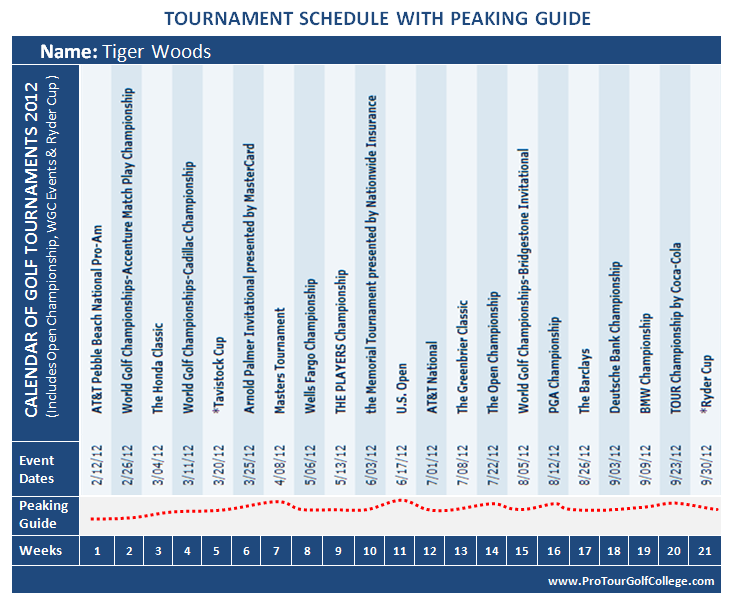




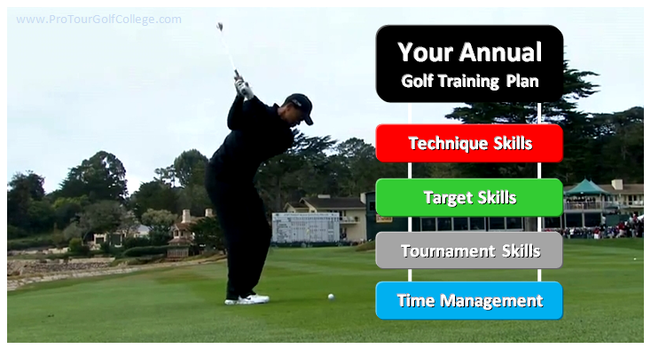




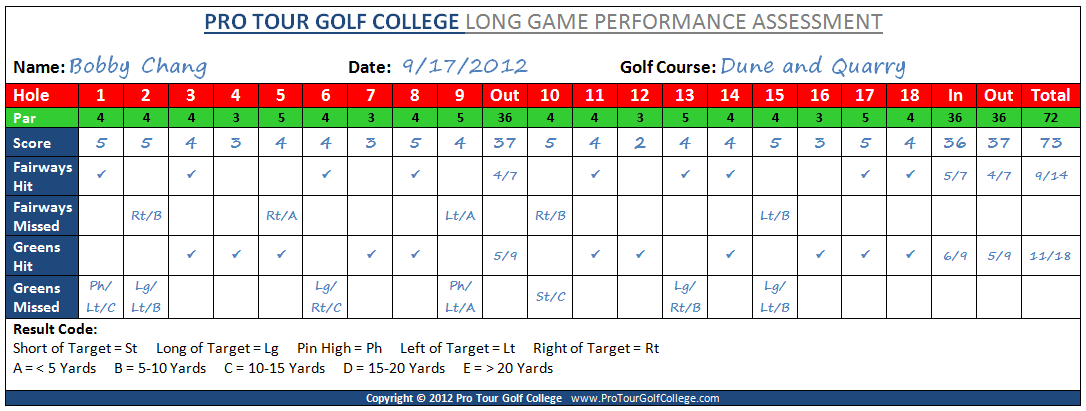

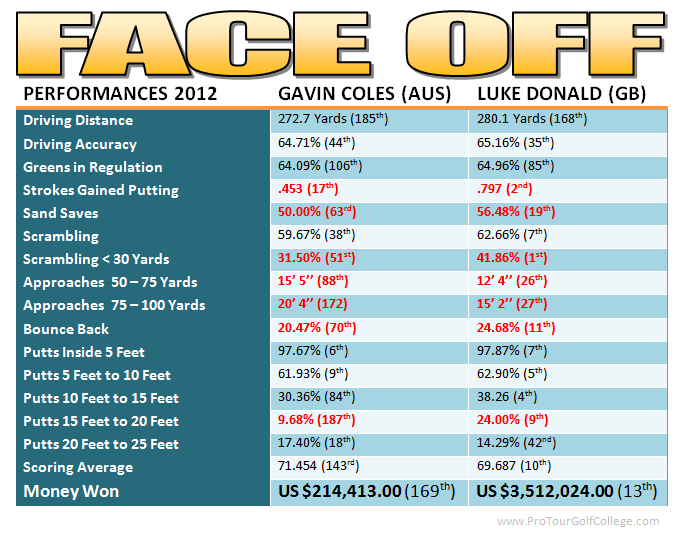

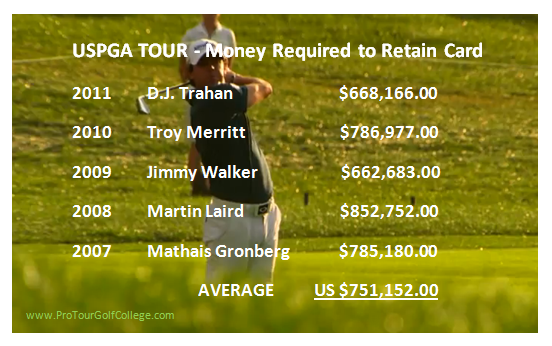
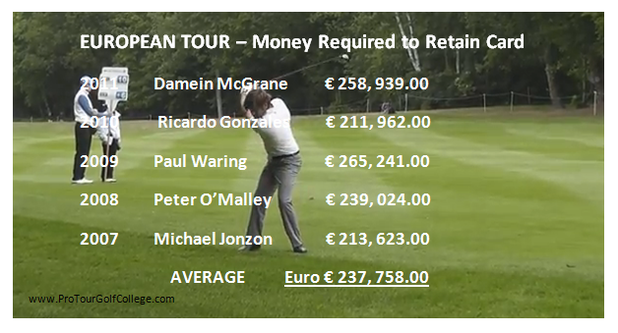
 RSS Feed
RSS Feed



